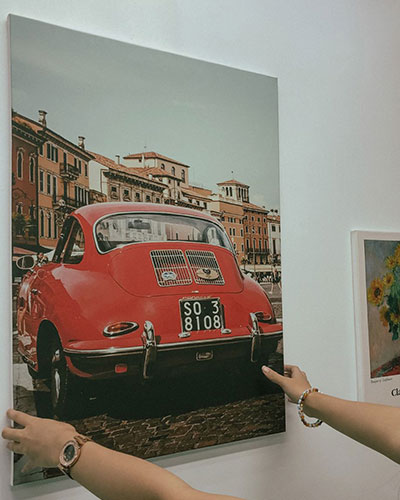
In today’s world, where environmental consciousness is paramount, even the smallest choices can significantly impact. Art, often seen as a purely aesthetic endeavor, can also be a powerful tool for sustainability. By empowering yourself to incorporate green design principles into your art print collection, you can contribute to a healthier planet while enriching your living space.
Choosing Sustainable Materials
The foundation of green art prints lies in the materials used. Opt for recycled or FSC-certified paper, which reduces deforestation and minimizes the environmental impact of paper production. Use sustainable materials like bamboo, cork, or reclaimed wood when framing your prints. These choices not only look stylish but also support environmentally responsible practices.
Supporting Local Artists
Buying art prints from local artists can significantly reduce your carbon footprint. The shorter transportation distances involved in sourcing local art minimize the emissions associated with shipping. Moreover, supporting local artists contributes to your community’s vibrant cultural fabric and fosters a sense of belonging and shared responsibility.
Embracing Digital Art
Digital art offers a sustainable alternative to traditional prints. By eliminating the need for physical materials like paper and frames, digital art reduces waste and environmental impact. Additionally, digital art can be easily shared and accessed online, reducing the need for physical storage and transportation.
Conscious Consumption
When selecting art prints, prioritize quality over quantity. Investing in high-quality pieces that will last for years reduces the need for frequent replacements. A minimalist approach to art can also help reduce clutter and the overall environmental impact of your collection.
Reuse and Repurpose
Keep old frames or art prints. Repurpose them for other creative projects or pass them on to someone who might appreciate them. Giving these items a second life reduces waste and promotes a circular economy.
Incorporating Green Themes
Beyond the materials and production processes, the content of your art prints can also reflect your commitment to sustainability. Consider pieces that depict nature, conservation efforts, or environmentally conscious themes. These prints can serve as visual reminders of the importance of protecting our planet.
In a Nutshell
By incorporating green design into your art print collection, you can contribute meaningfully to a more sustainable future. From choosing eco-friendly materials to supporting local artists and embracing digital art, there are countless ways to create a beautiful and environmentally conscious space. By making conscious choices, you can enjoy art’s aesthetic benefits and feel a sense of accomplishment in promoting a healthier planet for future generations.



















